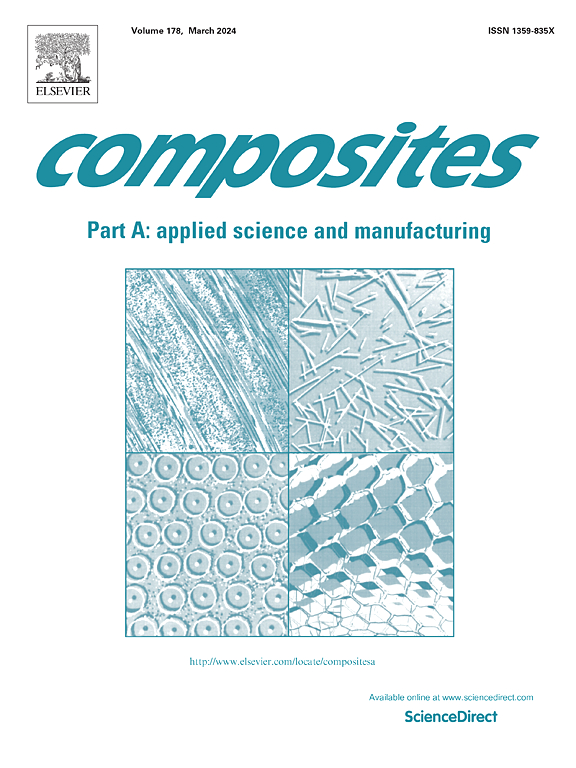混合片状模塑复合材料层压板的低速冲击响应
IF 8.1
2区 材料科学
Q1 ENGINEERING, MANUFACTURING
Composites Part A: Applied Science and Manufacturing
Pub Date : 2024-10-16
DOI:10.1016/j.compositesa.2024.108527
引用次数: 0
摘要
本研究对片状模塑料(SMC)的抗冲击损伤能力进行了全面研究。通过拉伸、压缩、低速冲击和冲击后压缩实验,比较了玻璃、碳和玻璃/碳混合 SMC 的性能。通过超声波和 X 射线方法对冲击层压板进行了损伤分析。在低速冲击中,玻璃 SMC 的损伤容限最高,损伤面积、裂纹密度和冲击后压缩强度(CAI)损失最小。另一方面,碳纤维 SMC 表现出更高的面内刚度和强度,但在冲击下的损坏面积和裂纹密度较大。混合 SMC 表现出最佳的折衷效果,在较低的冲击能量水平下,表现出中等的面内拉伸性能和出色的损坏耐受性,但在最高的冲击能量下,会出现大面积分层。总之,研究结果凸显了混合 SMC 在具有潜在冲击风险的结构应用中的适用性。本文章由计算机程序翻译,如有差异,请以英文原文为准。
Low-velocity impact response of hybrid sheet moulding compound composite laminates
This work presents a comprehensive study on the impact damage tolerance of Sheet Moulding Compounds (SMCs). The performance of glass, carbon and hybrid glass/carbon SMCs are compared by means of tensile, compression, low-velocity impact and compression after impact experiments. Damage analysis of the impacted laminates was performed by ultrasonic and X-ray methodologies. The glass SMC exhibited the highest damage tolerance in low-velocity impact with the smallest damaged area, crack density and loss in compression after impact (CAI) strength. On the other hand, the carbon SMC demonstrated superior in-plane stiffness and strength, but exhibited a large damaged area and crack density under impact. The hybrid SMC displayed an optimal compromise, exhibiting intermediate tensile in-plane performance and excellent damage tolerance at lower impact energy levels, but suffered from extensive delamination at the highest impact energy. Overall, the findings highlight the suitability of hybrid SMCs for structural applications with potential impact risks.
求助全文
通过发布文献求助,成功后即可免费获取论文全文。
去求助
来源期刊

Composites Part A: Applied Science and Manufacturing
工程技术-材料科学:复合
CiteScore
15.20
自引率
5.70%
发文量
492
审稿时长
30 days
期刊介绍:
Composites Part A: Applied Science and Manufacturing is a comprehensive journal that publishes original research papers, review articles, case studies, short communications, and letters covering various aspects of composite materials science and technology. This includes fibrous and particulate reinforcements in polymeric, metallic, and ceramic matrices, as well as 'natural' composites like wood and biological materials. The journal addresses topics such as properties, design, and manufacture of reinforcing fibers and particles, novel architectures and concepts, multifunctional composites, advancements in fabrication and processing, manufacturing science, process modeling, experimental mechanics, microstructural characterization, interfaces, prediction and measurement of mechanical, physical, and chemical behavior, and performance in service. Additionally, articles on economic and commercial aspects, design, and case studies are welcomed. All submissions undergo rigorous peer review to ensure they contribute significantly and innovatively, maintaining high standards for content and presentation. The editorial team aims to expedite the review process for prompt publication.
 求助内容:
求助内容: 应助结果提醒方式:
应助结果提醒方式:


